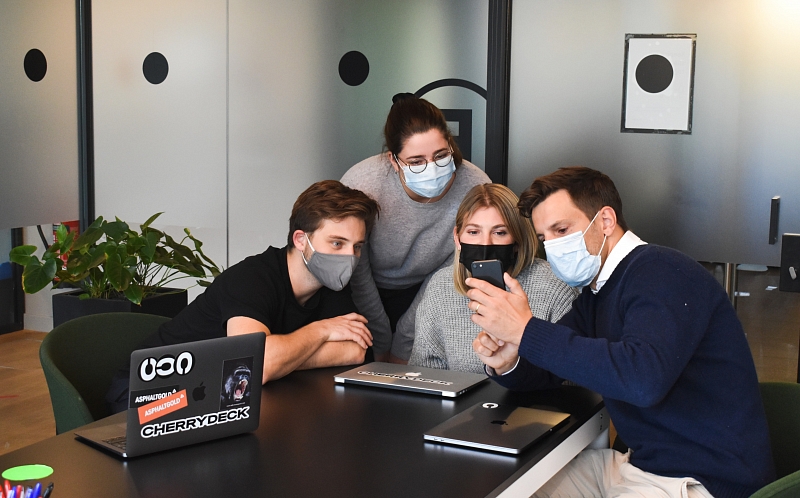
The Future of International Trade Shows in a Post-pandemic World
Relevant knowledge is easily communicated to potential clients through trade shows. A well-designed trade show exhibition can engage customers and effectively convey a company’s goods and services. It has the ability to illustrate product functionality and use, directly to a target audience. Slowly these trade show organizers are starting to conduct events physically again, with all the necessary covid protection measures. Is there any future for exhibition trade shows? Of course, the future includes trade shows, but now with some slight changes due to the pandemic.
From a human resources perspective, a business trade show is a big opportunity for recruitment agencies to provide their services. The team of organizers is huge and usually needs additional help from outside for the positions like Operations Team staff, Assistance crew on the show grounds, Registration desk, etc. HR Managers are highly needed for big-scale events, and in addition to supplying the trade show with human resources, the hiring agency can build a strong network within the show participants and also promote itself internationally.
People tend to think that offline or in-person events are not as popular as they used to be last year. While there are many controversial thoughts about this topic, exhibition organizers are trying to convince that the importance and effectiveness of trade shows don’t change. There will be many opportunities to network with industry stakeholders at exhibitions. Buyers must trust the seller (the exhibitor) if they want to buy for their business, but it is also critical that the trust goes both ways. A face-to-face meeting is best for them to establish confidence in one another. Offline networking platforms are created by trade shows. They do have online also, but it isn’t proving to be as effective as in person.
In fact, there is a trend among businesses to avoid virtual and physical exhibitions due to COVID to save in their marketing expenses. Many businesses have had to adjust their budgets in order to survive. However, as the virtual exhibition system evolves and establishes, businesses feel the need to participate to avoid being redundant in their industry and to improve sales (trade) results. If COVID-19 warrants more restrictions, exhibition organizers opt to hold the event virtually, but when possible both online and offline are available. Exhibitors who have already established relationships with industry stakeholders are able to consider participating only online and would receive the same benefits as they would offline from prior connections. Meanwhile, those who are new to an industry would be encouraged to participate in-person to establish confidence and trust with customers and business partners.
Building the virtual exhibition is currently costly due to the fact that it is in its early stages of implementation, but once trade shows organizers have set up the system, it will become more affordable. It is less likely that exhibition organizers would decrease the budget of remote events because they must make a profit. Organizers might reduce the virtual exhibition participation fee, but they would have to find another way to collect income from participants or investors.
What exactly has changed with the event itself?
According to Informa Markets, organizations that help specialist markets to innovate and grow by enabling businesses to connect with customers, learn, and trade – the majority of trade shows in Spring 2021 will be still conducted virtually. Online platforms are designed in a way to give participants maximum real-life experience. The exhibitors can build their digital company booth and maintain communication with potential customers and investors through this special platform.
Once the global situation will allow public gatherings, it is expected that international exhibition show organizers will need to implement many new disease prevention practices at a physical event. All participants are eligible to take part in the trade show only by following all rules, such as wearing masks, keep a 1-meter distance while personal communication, etc. On other hand, organizers would provide sanitizers and other personal hygiene tools at the location. It would be important to reduce the amount of unnecessary interaction, for instance by conducting the registration process online via QR codes or smartphone apps. In addition to all this, screening would be a must at a physical event. Organizers should make it possible, before entering the location all visitors have their temperature checked as well as register in the system. Having a negative Covid-19 PCR test result one-two days before the exhibition might become a usual norm for attending any physical events in the future.
In summary, exhibition show organizers are gradually beginning to execute events physically, but with all necessary precautions in place. A trade show aims to provide guidance about a company’s products and services to a prospective customer, so a well-done trade show presentation can attract buyers and effectively communicate a company’s products and services in both physical and virtual events. This has the potential to show a target audience how a product works and, as a result, how it will benefit the customer. Participating in trade show events online, or physically, is always a good investment for a company’s marketing development.
Content retrieved from: https://www.soprana.no/en/blog/the-future-of-international-trade-shows-in-a-post-pandemic-world.
